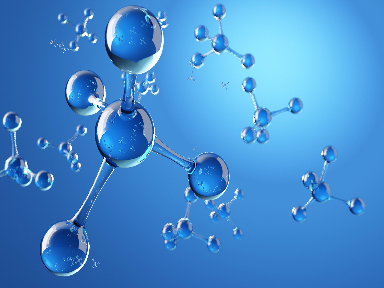PharmaSourcesMay 17, 2021
Tag: Kanamycin sulfate , Aminoglycoside antibiotic , ACE Injection
Kanamycin is an aminoglycoside antibiotic that can help treat different bacterial infections, but it is not a first-line treatment for any specific infection. It is taken as an oral, intravenous, or intramuscular injection.
The drug was first isolated from the bacterium streptomyces kanamyceticus in 1957, and the drug is no longer marketed in the USA. It belongs to the aminoglycosides family and works by inhibiting the protein synthesis of bacteria. The most prominent side effects include kidney and hearing problems.

Molecular weight: 582.6 g/mol
Molecular formula: C 18 H 38 N 4 O 15 S
CAS number: 25389-94-0
Formula weight: 582.58
Melting point: 250°C
Storage temperature: 2-8°C
Shipping: Ambient
Powder color: White to off-white
Spectrum of activity: gram-positive bacteria, gram-negative bacteria, mycobacteria, and mycoplasma
Kanamycin, related to other aminoglycosides, affects the vestibular and auditory branches of the eighth cranial nerve, which is responsible for hearing and balance. Consequently, Kanamycin can lead to ototoxicity manifested by vertigo and an inability to discriminate high-frequency sounds.
Moreover, aminoglycoside drugs can lead to acute renal impairment due to the effect of Kanamycin on the renal tubule. Specifically, this causes intrinsic renal failure manifested by elevated serum creatinine.
Kanamycin solution is stable at 37 °C for almost five days, and it can be stored at 2-8°C for long-term storage.
Kanamycin sulfate is added to the agar plate, and this plate should be sealed. This will prevent the evaporation of moisture from the agar.
This sealed agar plate should be stored at a temperature of 2-8°C for 1 month. If the plate is not sealed well, this may lead to the evaporation of moisture and, consequently, kanamycin degradation.
Sulfate kanamycin products are administered by different routes. An injection is a common one. The drug can be given intravenously or intramuscularly. The optimum dosage is calculated based on the pretreatment body weight. Please check renal function before administration, as this can help determine the related dosage.
For intramuscular injection, it is injected in the upper outer quadrant of the gluteal muscle. The dose used (in children and adults) is 15 mg/kg/day divided equally into two doses.
For intravenous injection, the dose used can't exceed 15 mg/kg/day, and it has to be given slowly.
Kanamycin sulfate monohydrate is a different compound from kanamycin sulfate. It has a different molecular weight and chemical formula. Specifically, its molecular weight is 502.5 g/mol, and its formula is C18H38N4O12. The monohydrate form is usually an odorless, white crystalline powder.
The biological mechanism of action of this drug is inhibiting protein synthesis activity in bacteria. Kanamycin binds to the 30S subunit of the bacterial ribosome available.
This leads to problems with the alignment of the mRNA and the formation of the amino acid chain in the incorrect order. Eventually, this will lead to misreading and nonfunctional proteins.
Because bacteria may need protein to reproduce, this may lead to bacterial death.
Kanamycin is a wide spectrum antibiotic that can treat the different gram-negative and gram-positive infections. Also, it is safe to use in scaleless fish. It can help in Fin and Tail Rot disease, a common condition of aquarium fish caused by bacteria.
Moreover, it can help treat other diseases like popeye, dropsy, and septicemia. Furthermore, the antibiotic can be absorbed by fish so that it can treat internal infections.
Kanamycin can help in different short-term bacterial infections caused by the following organisms:
Acinetobacter
Serratia Marcescens
Klebsiella pneumoniae
Enterobacter aerogenes
Proteus species
E. coli
Lb broth refers to lysogeny broth. LB is a media-rich in nutrients used in order to help culture bacteria.
LB broth plus antibiotic information:
The kanamycin concentration used is 50 mg/ml in H2O.
The final concentration for growing plasmids for LB liquid culture is 50ug/ml
Kanamycin solution is stable at 37°C for approximately 5 days, and its aqueous stock solutions are stored at 2-8°C for long-term storage.
PharmaSources is a vertical e-commerce online marketplace website that serves the pharmaceutical industry. Our website provides information on high-quality products and suppliers for global customers and delivers services to over 90,000 active members across 211 countries. You could always find trustworthy medical surgical equipment suppliers, active pharma ingredients manufacturers, and pharma ingredients manufacturers on Pharmasources.com. We are featuring more than 1,600,000 products on our website in more than 30 categories spanning the entire pharma supply chain!
In real life, no kanamycin antagonist can help in cases of kanamycin toxicity.
Nevertheless, some available research information states that the effect of Kanamycin can be antagonized by liquoid (sodium polyanetholsulfonate). However, please note that these are still research data in vitro and don't have any clinical implications.
We need more research data to help antagonize kanamycin toxic effects.
Kanamycin sulfate is added to the agar plate, and this plate should be sealed. This will prevent the evaporation of moisture from the agar.
This sealed agar plate should be stored at a temperature of 2-8°C for 1 month. If the plate is not sealed well, this may lead to the evaporation of moisture and, consequently, kanamycin degradation.


Contact Us
Tel: (+86) 400 610 1188
WhatsApp/Telegram/Wechat: +86 13621645194
+86 15021993094
Follow Us:




 Pharma Sources Insight July 2025
Pharma Sources Insight July 2025


